Trudy J. Morgan-Cole's Blog, page 2
October 18, 2025
The Homemade God, by Rachel Joyce

In The Homemade God, four adult siblings have to confront their relationships with their elderly father, who raised them as a single parent in a fairly chaotic household, and with one another. The triggering event is that Aging Dad, who is an artist of minimal talent but a fair degree of wealth and fame, has suddenly fallen in love with a woman who is younger than any of his children and who none of them have met. When he marries her, takes her away to the family villa in Italy, and shortly thereafter dies under mysterious circumstances, his family, naturally worried, converges on the villa to try to understand what happened. Along the way, all of them end up confronting not just their father’s widow but themselves and the ways in which their father, the “homemade god” of the title, has cast such a long shadow over all their lives. The ending of this book really moved me, which is a pretty high tribute from me.
October 12, 2025
Grown Ups, by Marian Keyes
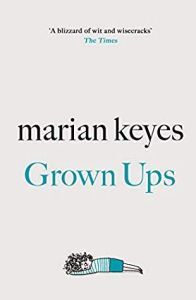
I recently realized I had never read anything by Marian Keyes even though she ticks a lot of my “favourite writer” boxes (Irish, writes sad/funny/hopeful novels about women and families, was hilarious on a podcast I listened to recently) so I picked up Grown Ups and it was a great place to start with her body of work. The novel traces a few months in the lives of the extended Casey family, who are a network of dysfunctions, lies, and secrets — all of which of course come spilling out in an unguarded moment, leading to both hilarity and heartbreak.
I really enjoyed this book and have moved on to other Marian Keyes books which no doubt you will be hearing about in due course.
Three Days in June, by Anne Tyler
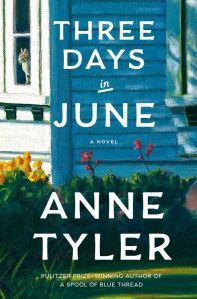
Three Days in June provides us with a classic and satisfying Anne Tyler setup. A middle-aged divorced woman, Gail, has to survive the weekend of her daughter’s wedding while navigating a sudden job loss, her own social awkwardness, her relationship with her daughter, and, most significantly, the unexpected necessity to spend the weekend under the same roof as her ex-husband Max, who has arrived expecting to crash at Gail’s place and also bringing a rescue cat in need of a foster home. (Gail does not want a cat, nor does she want Max). As the weekend with its tensions unfolds, so does the backstory of Gail’s life and her marriage to Max, leading to a conclusion that feels (to me, anyway) unforeseen but also just right.
Permanent Astonishment: A Memoir, by Tomson Highway

I’m not sure what to say about this book. It’s brilliantly written, a wonderful story of Indigenous childhood and joy in rural Manitoba in the 1960s that plays with languages in a wonderful way and was a delight to listen to as an audiobook. And yet, it took me ages to get through the audiobook — while it was enjoyable listening, I never found it compelling.
Also as a settler-descended Canadian, it was odd to listen to a book by an acclaimed Indigenous author in which he writes about his years in residential school in a mostly positive way. It’s not that Highway is unaware of or unaffected by the harms done in the residential school system, but he chooses to focus on the way in which it opened doors to him for further education and his future career, and most of the stories he tells about his school days are funny or heartwarming ones about his fellow students.
This is an unexpected perspective, but obviously any Indigenous person has the right to tell their own story in whatever way works for them, and as the title implies, Tomson Highway, while acknowledging the hardships and discrimination forced upon Indigenous people in Canada, chooses to frame this particular book around Indigenous joy — “permanent astonishment” at the beauty of the land, the joy and resilience of the Cree, Dene, and Metis people he grew up among, and the liveliness and power of the Cree language.
October 11, 2025
Maureen Fry and the Angel of the North, by Rachel Joyce
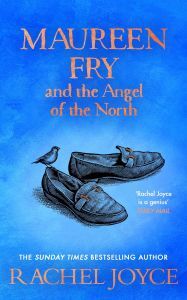
It took me a long time to get to reading this book after The Unlikely Pilgrimage of Harold Fry and The Love Song of Miss Queenie Hennessey, but Maureen’s journey (by car, not on foot) from the south to the north of England to see her son’s memorial and try to come to terms with her decades-old grief and with the fallout of Harold’s long and strange journey. This novel provides a poignant and beautiful completion to the trilogy, giving the third of these three senior citizens whose lives are all touched by a young man’s death, a story as complex and thought-provoking as the others. I love all these books.
Take My Hand, by Dolen Perkins-Valdez
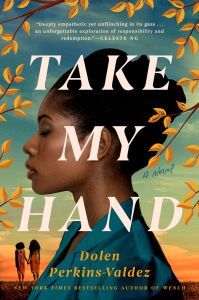
This was the third of my middle-of-the-night Libby downloads and, like the others and like all good historical fiction, it not only told a good story but introduced me to some history I didn’t know — in this case, the dark history of forced sterilizations of Black women, some of them girls barely past puberty, in the US in the 1970s. The story is told through the eyes of recently-graduated nurse Civil Townsend; while she and other characters in the story are fictional, the two young girls Civil tries to help are based on the real life Minnie and Mary Alice Relf. Theirs are just two notorious examples of many, many women from marginalized communities — Black, Latina, Indigenous, poor, and disabled women — subjected to coerced or involuntary sterilization, often driven by eugenicist beliefs. This has happened here in Canada and other countries as well as in the US, but by situating the story in a very specific time and place, Perkins-Valdez brings it to life and makes this injustice feel real and immediate.
Beyond That, the Sea, by Laura Spence-Ash
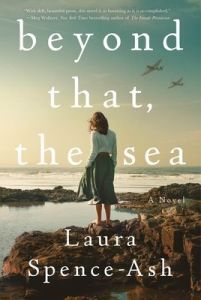
This was the second historical novel I downloaded in my late-night “let’s see what’s available on the Libby app even if I’ve never heard of it before” adventure. This novel is about an English girl sent to live in the United States during the Second World War — a perspective I hadn’t heard before, as I know a fair bit about children coming to Canada to escape the Blitz but hadn’t realized that some went to the US. The novel follows both families — Beatrix’s working-class parents in London, and the more well-off family she lives with for five years in Boston — not just through the war years but beyond, exploring how the complicated relationships forged during those formative years affect Bea throughout her life.
The Sicilian Inheritance, by Jo Piazza

Late one night when I couldn’t sleep and didn’t have anything new on my e-reader to distract me, I went on to my library’s Libby site looking for e-books that maybe weren’t on my “gotta read” list, but had the advantage of being immediately available and sounded like something I might enjoy. This was the first of them; after listening to the excellent podcast Wilder (about Laura Ingalls Wilder and Little House on the Prairie) which Jo Piazza was a co-creator of. This led to the Silician Inheritance podcast, in which Piazza tries to unravel the family mystery that serves as the basis for this novel. I listened to the first episode of that, thought it was interesting, but didn’t really get hooked, so didn’t pursue picking up the novel.
However, for a novel downloaded from the library at 3:00 am with the parameters “historical fiction” “women writers/characters” and “available NOW,” it was pretty good. The novel has a dual timeline, one strand telling the story of a Sicilian woman in the early 20th century who is left behind when her husband and sons move to America, and dies mysteriously before she can join them; the other thread is the story of the modern-day descendant who, facing shattering losses in her own life, goes to Sicily to explore a possible inheritance and ends up tangled both in solving a 100-year-old mystery and fighting modern-day organized crime. I liked what I learned about turn-of-the-century Sicily, which was the most interesting part of the novel.
The River of Silver, by Shannon Chakraborty
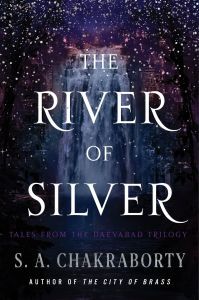
I read and absolutely loved the Daevabad trilogy (City of Brass, Kingdom of Copper, Empire of Gold) — hands-down my favourite new fantasy in many years. So of course I picked up River of Silver — a collection of short stories set in the world of Daevabad, visiting the characters before, during, and after the events of the trilogy. But it took me awhile to get around to read it because … y’know, short stories!
Of course I loved them. I don’t think these stories can or should stand alone for anyone who hasn’t read the trilogy, but if you did read it and, like me, loved it, don’t miss this opportunity for a visit back to the world of djinn magic.
August 16, 2025
How to Solve Your Own Murder
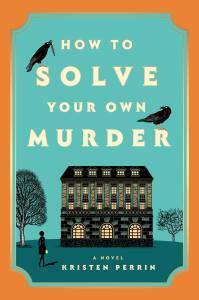
This is a nicely quirky and intriguing little mystery. Frances is a teenager in the mid-1960s when a fortune teller gives her a dire-sounding prediction that shadows the rest of her life and ends up shattering her relationship with her two closest friends. Frances believes, as a result of this prophecy, that she will be murdered — and although she lives to be seventy-five, the obsession with figuring out who’s going to kill her and preventing it dominates her whole life.
Enter Frances’s great-niece Annie is summoned to a meeting about her great-aunt’s estate, only to arrive just as Frances is (finally!) murdered. Following some very unorthodox instructions in Frances’s will, Annie sets out to solve her aunt’s murder. Her quest to do so is juxtaposed with scenes from Frances’s girlhood as she deals with the fallout from the fortune-telling.
While I thought there were some big leaps of logic in this novel, I enjoyed the dual-timeline mystery, thought some of the characters were fun, and, crucially, did not guess whodunnit. It was a light and enjoyable read.



